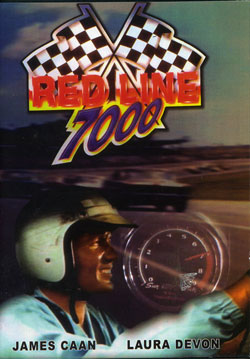|
|
|
Joyce says... There is so much promise to this film: James Caan in just his second film and first as star; Howard Hawks, who had directed legendary films such as Scarface, Bringing Up Baby, Only Angels Have Wings, Sergeant York and several John Wayne films that had cemented the Duke’s star power. There are a bevy of beautiful women and ample race track footage. Hawks had even done a fairly decent 1932 racing film with James Cagney, The Crowd Roars. So where did it all go so terribly wrong? This is a film that will, guaranteed, leave the viewer at some point thinking about whether the garage light got turned off when you left to come in and watch this mess. It’s too long, too careless with the racing details, and such a mish-mash of romantic nonsense that, really, you can get up and go check on the garage light without missing anything significant. If it matters at all, Caan (who worked brilliantly later on with Hawks in the western El Dorado) is race driver Mike Marsh, who can’t deal with the fact that his girl friend used to live with another driver, and so tries to kill that driver on-track. The pay-off is seeing the other car sail about 25 feet above the guard rail and land—oh, who knows or cares? They are so careless with details that it’s probably Singapore, but, boy, does this sequence do wonders for race drivers’ image. There are a few good moments. None come to mind other than seeing Caan as a handsome young man who manages to show promise as an actor in spite of a dreadful script, and a bunch of other people whose careers understandably went nowhere after this film, so your time is better spent changing the garage light. Type of Racing: NASCAR stock car racing Tracks: Daytona, Charlotte, Darlington, Atlanta, Riverside and Ascot Park (CA) masquerading as a southern dirt track Reel Racers: James Caan, Laura Devon, Gail Hire, and George Takei (as Kato) Real Racers: Richard Petty and Marvin Panch get brief, non-verbal cameos as themselves; other contemporary drivers are referred to Year of Release: 1965 DVD Length: 111 minutes Approx. On-Track: 29 minutes, mostly in brief snippets Color/B&W: Color Watch for: . . . Opening: Drivers suit up for the race—it clearly states on the wall that it’s Charlotte, but they go out to run the Daytona 500. Closing: Girls refer to Riverside as the first race of the year, followed by Daytona, Watkins Glen, and then the Daytona 500. Details, details, details. If you wanna be taken seriously… . . . The Charlotte race is broadcast live on national television. Again, folks, if you got to see racing at all on TV back then, it was a homogenized, condensed few minutes on ABC’s Wide World of Sports. Another detail blown. . . . The title came from the idea that if the driver exceeded 7000 rpms, the engine couldn’t take it and would blow up. So maybe a better title would have been “No Rev Limiters.” Actually, “Suds” for all the soap opera silliness would have been more accurate. . . . Top movie fashion designer Edith Head outfitted the women, who wear Easter hats in the grandstand and Jackie Kennedy-influenced dresses everywhere. Pretty but unrealistic. The false eyelashes alone could have held a sizable chunk of Goodyear tire. . . . “I’m a hoodoo,” says lisping Gail Hire about two boy friend drivers who died. She could have used the insurance money for elocution lessons. And think about it—somebody got paid for writing that line. . . . Driver comes from racing Monza to race at a southern NASCAR show? Maybe today (think Montoya), but in 1965? . . . The best racing sequence is the street Mustang on the dirt track in the dark. Nothing like letting the tail hang out. Too bad it lasts only just over a minute. |
